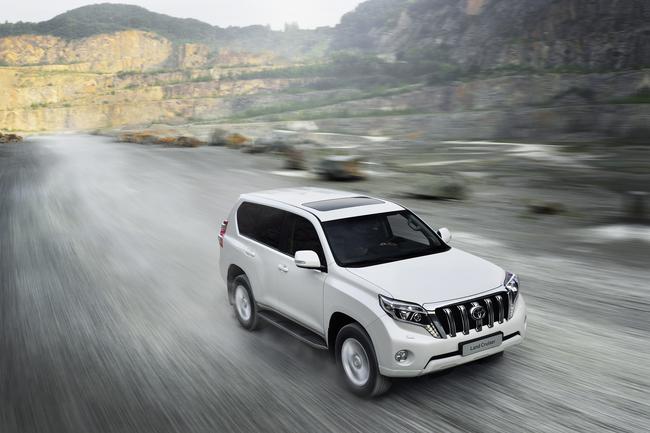Available on 3-door and 5-door new Land Cruiser models, Toyota’s newly developed 2.8l D-4D Global Diesel (GD) engine combines an 11% increase in low speed torque and a 7% increase in maximum torque with a 9% reduction in average fuel consumption.
The engine features Toyota’s first-ever urea Selective Catalytic Reduction (SCR) system that can eliminate up to 99% of NOx emissions, one of the main causes of air pollution.
The new 2,755 cc, 16 valves, DOHC four-cylinder engine comes equipped with a new, variable nozzle turbocharger with intercooler and develops 130 kW/177 hp at 3,400 rpm.
Mated to the new 6-speed Super ECT automatic transmission, the 2.8l D-4D develops 370 Nm of torque at 1,200 rpm, and a maximum 450 Nm of torque between 1,600 and 2,400 rpm. It will accelerate from 0-100 km/h in 12.7 seconds, and on to a top speed of 175 km/h. Average fuel consumption and CO2 emissions are reduced by 9% to 7.4 l/100 km (7.2 l/100 km for 3-door) and 194 g/km (190 g/km for 3-door) respectively.
When mated to the 6-speed manual transmission, the Land Cruiser 2.8l D-4D develops maximum of 420 Nm of torque between 1,400 and 2,400 rpm. It will accelerate from 0-100 km/h in 12.1 seconds, and on to a top speed of 175 km/h while returning an average fuel consumption of 7.4 l/100 km (7.2 l/100 km for 3-door) and CO2 emissions of 194 g/km (190 g/km for 3-door).
The new 2.8l D-4D engine incorporates a comprehensive range of measures designed to save weight, enhance combustion efficiency and reduce friction. A resin head cover has been adopted, and the thickness of the entire cylinder head has been reduced. The resultant weight reduction contributes significantly to lowering energy consumption and, hence, improving fuel efficiency.
The efficiency of the intake and exhaust ports, and the fuel injection system, has been optimized to maximize torque. Two intake ports are used in unison, according to the engine speed: a tangential port that produces a high swirl flow, agitating the air/fuel mixture to enhance combustion efficiency, and a helical port that achieves a high flow volume.
The engine features an electronically controlled, common-rail type fuel injection system that achieves higher pressure and more advanced injection pressure control, and a new piston shape has been adopted to match the new shape of the combustion chamber.
Precise pilot injection matching the state of the ambient air occurs before the main injection to shorten ignition delay, combining stable combustion in the harshest environments with quiet operation and high thermal efficiency. The new turbocharger is 30% smaller than its predecessor and features a newly-developed turbine for improved efficiency, and a newly-developed impeller that provides instantaneous acceleration response and produces maximum torque over a wide rev range.
The unit is equipped with a water-cooled Exhaust Gas Recirculation (EGR) system with an EGR cooler bypass function, and also benefits from a swirl control valve in the intake manifold. The adjacent positioning of the catalyst combines cleaner performance with a reduction in size of some 30% and a reduction in the number of exhaust system components from 18 to three. The elimination of up to 99% of NOx emissions through use of Toyota’s urea Selective Catalytic Reduction (SCR) system ensures the 2.8l D-4D Land Cruiser complies with Euro 6 regulations.
Mechanical friction within the engine has been minimized through the adoption of a high-efficiency vacuum pump, a roller rocker-type valve train and a low friction timing chain, further improving combustion efficiency.
Source: Toyota




















